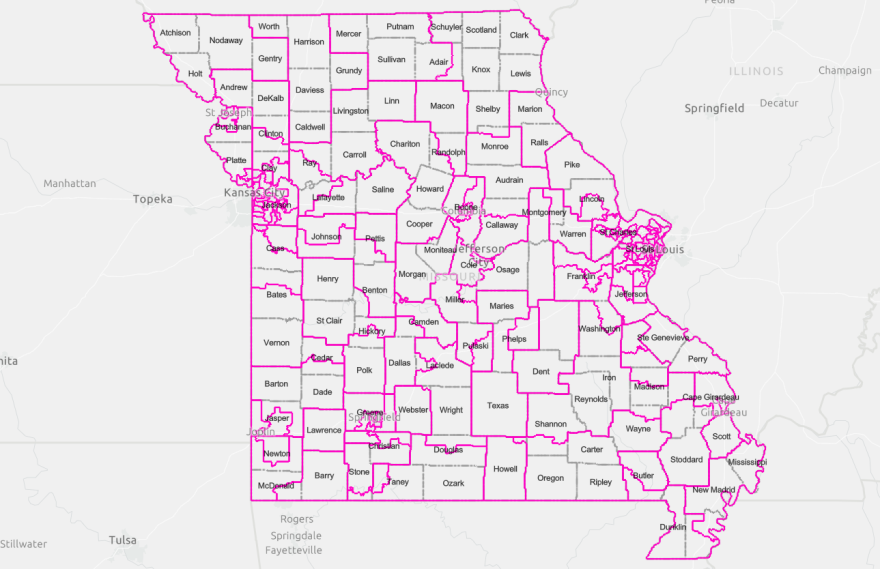A citizen commission made up of 10 Republicans and 10 Democrats has unanimously passed a new map that redraws Missouri’s 163 House districts.
The agreement Wednesday, which required at least 14 out of 20 votes, was surprising to some, including House Minority Leader Crystal Quade, D-Springfield. The map has been sent to the Secretary of State’s office and is expected to go into effect for elections later this year.
“When you watch the process, going back and forth through the hearings, at one point, I thought, well, if either side’s going to be able to come to a consensus, it'll be the Senate because those discussions seem to be going OK early on,” Quade said.
The announcement comes after six months of discussions, including public meetings to hear input from Missourians. The commission faced a deadline of Jan. 23 to vote on a final map; otherwise a panel of appellate judges would be responsible for drawing the new districts.
Democratic Commissioner Melissa Patterson Hazley said one of her priorities going into the process was to expand the number of public meetings, including adding some in rural areas.
“I knew that in rural communities, we do have more limited options for transportation, and also we have some broadband issues,” Patterson Hazley said. “So, it was really important to me that we created an opportunity to at least decrease some of the barriers even though I knew we couldn't remove them all together.”
Rick Shang, another commissioner on the Democrats' side, said a couple of the priorities of the commission were to have the map reflect community interests and be competitive.
“What we want is not really per se in a narrow sense a Republican map or a Democrat map. What we really want is an impartial map,” Shang said.
In December, the House commission sent both a Democratic map and a Republican map to Secretary of State Jay Ashcroft’s office. Patterson Hazley said that action taken by the commission was an indication that a compromise map was possible.
“I think the fact that we agreed to submit both of them was a very positive sign that we will be able to compromise and negotiate,” Patterson Hazley said.
Jerry Hunter, chairman of the commission and one of its Republicans, said the committee eventually understood that in order to agree on a map, compromises on some districts would have to happen.
“I think both sides realized that neither side was going to get everything they wanted. So there probably are more competitive districts under this map,” Hunter said.
According to Democrats, the new map itself provides opportunities to gain seats in 2022. The map increases the number of majority Black districts from 11 to 16. It also adds a new Hispanic/Latino-influence district.
Shang said Democrats and Republicans worked together to consider growing minority populations.
“African Americans, Hispanic populations, Asian populations are growing very fast, and the House districts should reflect the demographic reality of the population growth,” Shang said.
As to what these new districts mean for current representatives, Quade said members will have that discussion soon.
“We'll sit down with a map and go over where our incumbents live. We'll go where our candidates are because we do have some candidates that have been drawn in together and some where our incumbents are — so, just trying to get a lay of the land,” Quade said.
The agreement on the House commission contrasts with its Senate counterpart. Those members have yet to agree on a map, almost guaranteeing that a panel of appellate judges will make those decisions. The panel of judges is expected to be appointed around Jan. 30.
Follow Sarah Kellogg on Twitter: @sarahkkellogg






